- Home
- Graham Hancock
Underworld Page 17
Underworld Read online
Page 17
13. Image from ‘the penance of Arjuna’, Mahabalipuram: ascetic performing austerities.
That evening Santha and I climb College Hill, beautiful as the sun goes down with commanding views over a green, half-remembered landscape.
Monday 7 December 1992
Things are coming back a bit more to me now. We visit the CMC Hospital in the morning. Then take a rickshaw to Vellore Fort and then back to the CMC compound via the Protestant cemetery once again. Still we can’t find the grave. It’s strange to reflect that my sister lies buried and forgotten somewhere here. I dreamed of her a few nights ago, dreamed that she spoke to me. I would like to have known her and-really for the first time – am acutely aware of a missing presence in my life. It’s all years ago now, and far away, but I do miss you, Susan. I wish I could just pick up the phone and call you sometimes. Instead I’m an only child, wandering in a graveyard, feeling sorry for myself.
Santha and I complete our visit to Vellore by exploring the CMC compound. I remember the lily-pond – still there – with its frogs. And I do remember the great old tamarind tree and the general outline of the two wings of the Men’s Hostel.
Finally we climb up College Hill again for a last look around and then set off on the four-hour drive to Madras on the coast of the Bay of Bengal.
The mystery of the Seven Pagodas
The next day our target was Mahabalipuram, 50 kilometres south of Madras, where I planned to indulge some more childhood memories – this time of a rock-hewn temple standing by the sea. As in Vellore, I didn’t really feel that I was there to do research, more on a journey of personal reminiscence. Since the temples were thought to be less than 1500 years old, and had been made on the orders of known historical kings, I had no reason to expect they might be relevant to my primary interest in the possibility of a lost civilization of the last Ice Age more than 12,000 years ago.
Perhaps it was because I went to Mahabalipuram in this frame of mind in 1992 that it gave me back exactly what I expected – i.e. nothing of interest. And yet all along, as I was to discover much later, there was something that I needed to know there. It was hidden away in an anthology of travellers’ journals and reports edited by a certain Captain M. W. Carr in 1869 under the title Descriptive and Historical Papers Relating to the Seven Pagodas of the Coromandel Coast.17 I found the anthology in a second-hand bookshop in Madras after visiting Mahabalipuram in 1992 but did not read it until the year 2000. It was then I discovered for the first time that ‘Seven Pagodas’ is the old mariners’ name for Mahabalipuram – and that the Coromandel coast is the coast of the Bay of Bengal from Point Calimere in the south to the mouth of the Krishna river in the north.
In one paper J. Goldingham, Esq., writing in 1798, spoke of the part of Mahabalipuram that I remembered best from my childhood – the ‘Shore Temple’, carved out of solid granite, lashed by waves:
The surf here breaks far out over, as the Brahmins inform you, the ruins of a city which was incredibly large and magnificent … A Brahmin, about 50 years of age, a native of the place, whom I have had an opportunity of conversing with since my arrival in Madras, informed me his grandfather had frequently mentioned having seen the gilt tops of five pagodas in the surf, no longer visible.18
An earlier traveller’s report, from 1784, describes the main feature of Mahabalipuram as a ‘rock, or rather hill of stone’, out of which many of the monuments are carved. This outcropping, he says:
is one of the principal marks for mariners as they approach the coast and to them the place is known by the name of ‘Seven Pagodas’, possibly because the summits of the rock have presented them with that idea as they passed: but it must be confessed that no aspect which the hill assumes seems at all to authorize this notion; and there are circumstances that would lead one to suspect that this name has arisen from some such number of Pagodas that formerly stood here and in time have been buried in the waves …19
The same author, William Chambers, then goes on to relate the more detailed oral tradition of Mahabalipuram – given to him by Brahmins of the town during visits that he made there in 1772 and 177620 – that prompted his suspicion of submerged structures.
According to this tradition, which is supported by certain passages in ancient Hindu scriptures,21 the god Vishnu had deposed a corrupt and wicked Raja of these parts at some unknown date in the remote past and had replaced him on the throne with the gentle Prahlada, whose reign ‘was a mild and virtuous one’.22 Prahlada was succeeded by his son and then by his grandson Bali, said to have been the founder of the once magnificent city of Mahabalipuram (which, translated literally, means ‘the city of the great Bali’ or more likely ‘the city of the giant Bali’).23 Bali’s dynasty continued with his son Banasura – also portrayed as a giant24 but during his reign disaster struck:
Aniruddha, the [grand]son of Krishna, came to his [Banasura’s] court in disguise and seduced his daughter, which produced a war in the course of which Aniruddha was taken prisoner and brought to Mahabalipuram; upon which Krishna came in person from his capital Dwarka and laid siege to the place.25
Although the god Siva himself fought on the side of Banasura, they could not prevail. Krishna found a way to overthrow Siva, captured the city and forced Banasura into submission and lifelong fealty.26
An interval followed, after which another Raja – whose name was Malecheren – took the throne at Mahabalipuram. He encountered a being from the heavenly realms who became his friend and agreed ‘to carry him in disguise to see the court of the divine Indra’ – a favour that had never before been granted to any mortal:27
The Raja returned from thence with new ideas of splendour and magnificence, which he immediately adopted in regulating his court and his retinue, and in beautifying his seat of government. By this means Mahabalipuram became soon celebrated beyond all the cities of the earth; and an account of its magnificence having been brought to the gods assembled at the court of Indra, their jealousy was so much excited at it that they sent orders to the God of the Sea to let loose his billows and overflow a place which impiously pretended to vie in splendour with their celestial mansions. This command he obeyed, and the city was at once overflowed by that furious element, nor has it ever since been able to rear its head.28
There are puzzles about this myth.
First, it was collected, written down and published in the eighteenth century. This was long before any of the ancient inscriptions of Mesopotamia could be read, yet the story of Mahabalipuram bears some striking resemblances to the flood myths of Mesopotamia. In the original Sumerian flood text cited in chapter 2, and in all later variants of it – including the Babylonian versions, the Old Testament account of the flood of Noah and, for that matter, Plato’s (supposedly unrelated) story of Atlantis29 – the gods are angry with or jealous of mankind, exactly as they are said to have been in the Mahabalipuram myth. In all the other myths (with the exception of the Noah story) the gods meet in assembly – again as they are said to have done at Mahabalipuram – before resolving to destroy upstart mankind by sending a flood. And in all the other myths cities and cult centres are submerged by the flood:
Sumer: ‘All the windstorms, exceedingly powerful, attacked as one; at the same time the flood swept over the cult centres.’
Mahabalipuram: ‘The God of the Sea … let loose his billows and … the city was at once overflowed by that furious element …’
It is also obvious that there are resonances between the Mahabalipuram flood tradition from south-eastern India and the Dwarka flood tradition from the north-west. It is not just that Dwarka is specifically mentioned in the Mahabalipuram story (somewhat surprising in itself) but also that Mahabalipuram and Dwarka, like lost Atlantis and the five antediluvian cities of Sumer, all suffer the same fate – which is to be swallowed up by the sea.
In the case of Dwarka there is also another matter to consider – the end of the former age of the earth and the dawn of the Kali Yuga.
Travels in the Kali Yuga
Our journey from Mahabalipuram to Dwarka in December 1992 was fraught with reminders that we live in the Kali Yuga today – an age of spiritual darkness that the Vedic sages always knew would be filled with the worst kinds of human cruelty and evil. On 6 December 1992 Hindu kar savaks (volunteers) violently attacked and pulled down the mosque at Ayodhya in Uttar Pradesh intent on building a new temple for Ram (Rama, another incarnation of Vishnu), whose birthplace is believed to have been on the site of the mosque. This act of ‘reclamation’ sparked off a wave of violence and mass murder between Hindus and Muslims throughout India which reached a peak in the city of Surat on the Gulf of Cambay in south-western Gujerat. There whole families were roasted alive on fires made up of heaps of their own possessions and in one grisly incident a woman was subjected to multiple rape by a crowd of frenzied males, then burned, and finally beheaded with a sword.
With martial law declared in most cities and go-slows and strikes being staged by Indian Airlines, it took us two days to fly via Madras and Trivandrum to Bombay. From there we arranged to travel the remaining 1000 kilometres or so to Dwarka by road and hired a Maruti van (a motorized roller-skate) and a stalwart Gujerati driver named Vinhod to get us there.
Saturday 12 December 1992
Set off north from Bombay in our little Maruti van. The country towards Gujerat is surprisingly lush, jungly and hilly. The roads are completely crazy and this is an interminable day of driving. It becomes clear that we cannot reach Dwarka in less than two full days like this, and that we may require three – so we set our sights for the first night on Lothal, the Indus-Sarasvati port of the third millennium BC that lies in central Gujerat near the northern end of the Gulf of Cambay. Unfortunately, Vinhod and most people along the way don’t seem to know where or what Lothal is and the maps we have are not clear. But part by luck, part by trial and error, we arrive at a truck stop called Pakota late, late at night which turns out to be just 18 kms from Lothal. One of the truckers directs us to a rundown hotel.
Lothal and the ships from Meluha
Lothal turned out to be a quiet sleepy mound in the midst of flat, productive countryside, but in the third millennium BC it was the greatest port of the Indus Valley civilization, connected to the sea by a tidal river channel that has long since dried up. Its dominant architectural feature still surviving today is its great trapezoidal dock.
A major problem with river ports in general is that they can quickly become choked by silt and useless. At Lothal a scientific solution was found to this problem 4500 years ago. First a huge artificial basin was cut into the ground on the eastern side of the town. Then a walled structure measuring 219 metres in length (north-south), 38 metres in width (east-west) and 4.15 metres high, was built into it. The walls were almost 1.78 metres thick at the base, narrowing to just over 1 metre thick at the top, and millions of the best quality kiln-fired bricks were used in their construction.30 According to the report of S. R. Rao, Lothal’s excavator, the inner faces of the dock walls are plumb and ‘no steps or ramps are provided anywhere as the primary purpose was to see that the edge of the boat should touch the wall-top to facilitate easy landing and handling of cargo’.31 At the same time ‘three offsets were provided on the outer face of the western wall and two in the case of other walls to resist the overturning movement due to water thrust’.32
The dock has a major inlet in its north wall, a second inlet at the southern end of its east wall and a spillway, fitted with an efficient water-locking device, in its south:33
Ships entering the Gulf of Cambay had to be moored along the river quay on the western side of the town and sluiced into the basin at high tide through the first inlet (12 metres wide) provided in the northern arm. A spillway with 1.5 metre thick walls was built at right angles to the southern arm for escape of excess water at high tide. The water-locking device provided in the spillway ensured a minimum draught at low water [2 metres as against 3.5 metres at high water]. Easy manoeuvrability of large ships of 60 to 75 tons capacity and measuring 18 to 20 metres long was possible as they could enter from the shorter side and move along the longer side. The easy flow of water at high tide through the basin ensured automatic desilting. The scouring effect of the tidal waters was arrested by constructing a buttress wall on either margin of the inlet, traces of which can be seen in the case of the northern inlet and more clearly in the second-stage inlet. When the river changed its course and started flowing 2 kms away from the town, a new inlet 2 metres deep, was dug to connect the river with the eastern arm of the dock, but large ships could not enter the basin after 2000 BC.34
Archaeologists and engineers are in little doubt that the design of the dock testifies to a long-accumulated experience within the Indus-Sarasvati civilization of the particular problems and challenges posed by such structures. According to N. K. Panikkar and T. M. Srinivasan:
The Lothal dock being purely a tidal one, the Lothal engineers must have possessed adequate knowledge of tidal effects, the amplitude, erosion and thrust. From this knowledge they developed competence at Lothal for receiving ships at high tide and ensuring flotation of ships inside the dock at low tide. This is perhaps the earliest example of knowledge of tidal phenomena being put to a highly practical purpose both in the selection of site having the highest tidal amplitude and in adopting a method of operation for entry and exit of ships.35
The builders of Lothal lived in the same epoch of early history as the builders of the wonderful Great Pyramid of Egypt and – though obviously on a smaller scale – the dock is a reminder that the peoples of the Indus-Sarasvati civilization possessed a scientific approach, design skills, and hands-on experience of construction problems comparable to those that were evident amongst the ancient Egyptians.
Moreover, it is thought likely that there were both direct and indirect contacts between the Nile and Indus valleys, and between Asia and Africa in general, going back to very ancient times. In the on-site museum at Lothal we were able to see certain items excavated by Rao’s team that are indicative of this. These include a terracotta figurine of a gorilla, a species that is found only in sub-Saharan Africa, and a second terracotta figure reminiscent of an Egyptian mummy.36
Finds in Egypt also suggest contact. Of special interest, because it dates back to the predynastic ‘Gerzean’ period (roughly 3500–3300 BC),37 is a ripple-flaked flint-bladed knife with a beautifully carved ivory handle that was excavated at Gebel-el-Arak in Upper Egypt. In one of the reliefs that decorate the handle a bearded man in fine robes is depicted gripping two powerful male lions by the throat. According to the Egyptologist and art historian Cyril Aldred, this scene ‘shows, subduing two lions, a hero who resembles the Mesopotamian Gilgamesh, “Lord of the Beasts”’.38 Aldred notes that ‘this same unusual theme appears on a wall-painting in a Gerzean tomb at Hierakonopolis’39 – which is indeed the case. He seems unaware, however, that, with minor variations, the scene also appears in the art of the Indus-Sarasvati civilization – for example, on ornate terracotta and steatite seals, excavated in many sites, and on a particularly striking moulded tablet from Harappa that Jonathan Mark Kennoyer describes as:
a figure strangling two tigers with bare hands [which] may represent a female, as a pronounced breast can be seen in profile. Early discoveries of this motif on seals from Mohenjodaro definitely show a male figure, and most scholars have assumed some connection with the carved seals from Mesopotamia that illustrate episodes from the famous Gilgamesh epic. The Mesopotamian motifs show lions being strangled by a hero, whereas the Indus narratives render tigers being strangled by a figure, sometimes clearly male, sometimes ambiguous or possibly female. This motif of a hero or heroine grappling with two wild animals could have been created independently for similar events that may have occurred in Mesopotamia as well as the Indus Valley.40
Gilgamesh-like figure between two felines from a bronze breastplate, Tiahuanaco.
Perhaps. But I wonder if Kennoyer’s conclusion is not a little hasty, and whether it is
strengthened or weakened by the fact that almost identical figures of a ‘man between two felines’ have also been found amongst the art of the prehistoric megalithic city of Tiahuanaco in South America.41 Such similarities may depict similar events that occurred by coincidence in different places, but other explanations might also fruitfully be sought for why the same – ‘unusual’ – symbolic device is found in ancient Egypt, ancient Mesopotamia, the ancient Indus-Sarasvati civilization and ancient South America.
Gilgamesh-like figure between two felines from a Gerzean period knife, Egypt.
On the other side of the Gebel-el-Arak knife handle is a second scene that suggests contact between Indus-Sarasvati peoples, predynastic Egyptians and the ancient civilizations between the Tigris and the Euphrates rivers in Mesopotamia. In Aldred’s description it shows a water battle in progress: ‘In the upper row, the boats have vertical prows and sterns rather like the belems of the Tigris, in the lower they have the normal appearance of Egyptian boats of Gerzean date.’42 But the archaeologist Ernest J. H. Mackay, who carried out extensive excavations in both Egypt and the Indus valley during the first half of the twentieth century, noticed something else. Describing a representation of a boat carved on a seal that he found at Mohenjodaro, he commented:
The bindings of its hull suggest that this boat was made of bundles of reeds, as were so many contemporary craft of ancient Egypt. It is mastless, which perhaps indicates that it is a river boat. The uprights at either end of the cabin carry flags or emblems and a seated steersman holds a pair of rudders, as on the modern Indus craft. This vessel, it is interesting to note, is singularly the one portrayed on the well known Gebel-el-Arak ivory knife handle.43

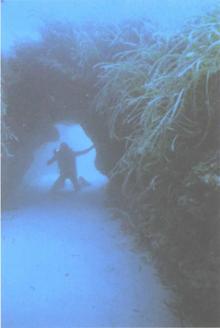 Underworld: The Mysterious Origins of Civilization
Underworld: The Mysterious Origins of Civilization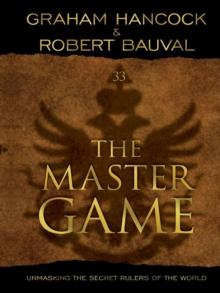 The Master Game: Unmasking the Secret Rulers of the World
The Master Game: Unmasking the Secret Rulers of the World America Before
America Before Entangled
Entangled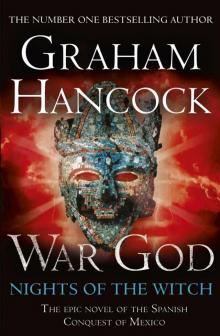 War God: Nights of the Witch
War God: Nights of the Witch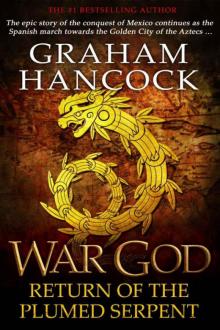 War God: Return of the Plumed Serpent
War God: Return of the Plumed Serpent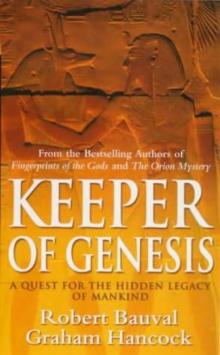 The Message of the Sphinx AKA Keeper of Genesis
The Message of the Sphinx AKA Keeper of Genesis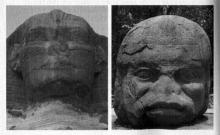 Fingerprints of the Gods
Fingerprints of the Gods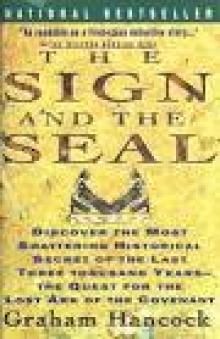 The Sign and the Seal
The Sign and the Seal The Mars Mystery: The Secret Connection Between Earth and the Red Planet
The Mars Mystery: The Secret Connection Between Earth and the Red Planet Magicians of the Gods: The Forgotten Wisdom of Earth's Lost Civilization
Magicians of the Gods: The Forgotten Wisdom of Earth's Lost Civilization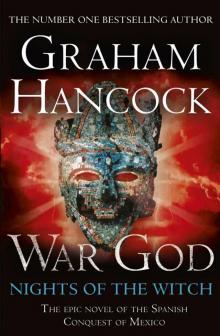 War God
War God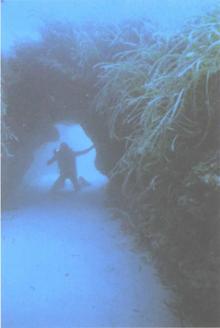 Underworld
Underworld The Mars Mystery
The Mars Mystery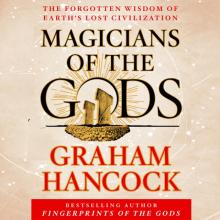 Magicians of the Gods
Magicians of the Gods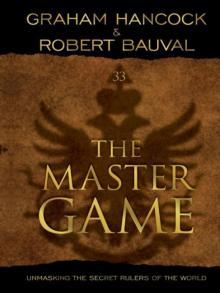 The Master Game
The Master Game